I’m pleased to present this three-part interview with the distinguished painter Stuart Shils who recorded his thoughts about the twelve questions I sent to him. The audio recordings available here (in three-parts) in addition to the written and lightly edited transcription. In this first-part of the interview, Stuart Shils speaks at length about his new body of work and what moving beyond representation has meant for him. The second-part he talks about his teaching and the third-part examines a number of concerns he has for painting today.
Stuart Shils is a Philadelphia artist who studied painting at the Pennsylvania Academy of the Fine Arts. He is represented by steven harvey fine art projects ,New York, NY. Shils’ works on paper is represented by DAVIS & LANGDALE, New York, NY
Shils is the recipient of a Pollock-Krasner Foundation Grant, a National Endowment for the Arts Fellowship, and an Academy Award from the American Academy of Arts and Letters.
From the steven harvey fine art website: Stuart Shils uses a variety of media to explore an evolving fascination with the perceptual process. Known for many years as a painter of landscapes working from direct observation in Ireland, Italy, and Philadelphia, Shils now explores the intimacy of place within the world ‘out there’ by way of improvisational urban street photography, paper collage, painted photographs and monotype. While the urban photographs are direct examinations of the specific qualities of material presence and ‘place’, the monotypes, collages and photo collages are more evocations of memory and feeling.David Cohen says, “the palimpsest of screens and frames that characterize his photographic motifs are equivalents of a painting process that is somehow at once alla prima and layered, marked equally by impressionistic responses and minutely deliberative editing, a kind of temporal push-pull that exploits dichotomies of composure and snap.”
You can listen either streaming or downloaded to your computer from the links below.
Link to the page where you can download the podcast to your computer, https://archive.org/details/1234SShilsAudioF
The play control below is for the streaming version of the audio
Larry Groff:
I’d like to find out more about your recent compositions with layered papers, transparencies and LED light table, light through collaged paper & tape and your many photographs from your iPhone and small Leica. What lead you to make this new body of work?
Stuart Shils:
Where my recent work comes from is more complex than was immediately apparent to even me – remember that I was the there in the midst of it and not at all a rational outside observer with some distance, but just because I have my hands on the material doesn’t necessarily mean that I have a clear sense of what is going on or ultimately have that much control over destiny. So in relation to the idea of origins, here is a comparative pair of images: a painting from 1995 (shown in b&w) and then, a three dimensional object made in the studio last February 2016, to suggest that that the connection between the past and the present is not something planned or that could have been anticipated.
While recently putting slides together for a talk, I noticed that the abstract form or structure of this painting from the mid-90s (which was not at all on my mind because for me, being in the immediate moment annihilates clear memory of the past), was strikingly reminiscent of objects I was constructing now, and this juxtaposition reinforced the idea of how the passing of time sheds light on and illuminates the notion that seemingly disparate things may not be that different and that the past and the present are often closely connected. And, that regardless of what we want to happen, things connect in their own ways and at their own pace, moving slowly like very deep tides beneath the surface of the sea. So really, this new work you are asking about has a lineage in deeply rooted preoccupations and obsessions that go back to childhood.
As a kid I loved visiting building and demolition sites with my Dad in the city, and was always aware of urban form as a teenager while wandering around Center City Philadelphia, and then while in college I developed an even more sensuous passion in architecture school for a few years before dropping out.
If you read Louis Kahn (who was an early hero of mine) he talks about riding around Philadelphia as a child and the impact all those brick factories had on the development of his awareness of form. For me, perhaps THE SINGLE MOST important visual influence was taking the Chestnut Hill Local train into town as a child, repeatedly and for many years, thousands of times, back and forth in and out of the city.
During the 20 minute ride looking out the window as the train went through North Philadelphia, Wayne Junction and Germantown, my eyes and senses visually tasting and absorbing the impact of the abandoned factories and warehouses, those cathedrals of industry whose massive forms, even in states of decay or damage, gave me a rich feeling for tactile, architectural sensation and established in my feeling senses an awareness of scale.
I believe this was the fuel for everything I did as a painter in later years and now with collage and the camera. (And by scale I don’t mean anything to do with what size something actually is, but rather with how it feels formally as an abstract presence within a spatial context, how a unique intersection of parts or notes creates a unified presence in the moment as say in music with a chord. I like the chord analogy for how we taste a visual moment. When I first heard the ending chord in 1967 in A Day In the Life on Sgt Pepper’s, it made a lot of sense in relation to visual presence and how things hit us.
(note all images in this article display a larger view when clicked)
I was showing slides recently that included paintings of mine from the mid-90s, and someone asked me, where the magnetic pull comes from, where does the desire arise that pulled me in a certain direction with regard to my work.
My fast answer was, remembering an 8th grade after-school cotillion class when the boys were sitting on one side of the room and the girls on the other, and the chaperon/teacher said, “okay, kids, It’s time to go over to the other side of the room and choose someone to dance with.” How did we know who we were going to choose to dance, other than it’s based on something not related to words, but to a feeling and to certain qualities of impulse that are possibly not so easy to describe.
So perhaps it’s the same thing with how we find ourselves rooted in our work. Those landmark directions are related to things that precede words and that live beneath literary descriptive language, more related to sensory impulse. And it’s all a long story, like dropping a bucket down into a well and waiting a long time to hear it hit water.
So much of the recent work is not ‘painting’. But I’ve gotten to the point where I ask myself what is painting? And yes, it only exists, almost exclusively, in photo documentation–and I mean, the improvisational evolving window collages and light table drawings that are really ephemeral or transient presences, none of which are intended to exist in any ‘final’ form other than transitional stops along the way and certainly not, or at least not yet, in three dimensional world other than the photograph. They are made in communities of related graphic impulses and are changing by the hour as I move pieces of paper around, adding, taking away, trying things out.
It’s true that I use my iPhone and the iPad which has a fabulous camera and the screen is so large and fun to look through, really delightful for the senses. And I have two very small digital cameras, a pocket-sized Leica and a pocket-sized Sony. And that’s pretty much it.
There is something about this slightly lower-res quality of the iPhone that I really enjoy. I’m so tired of being surrounded by such high-def images, and the obsession we are living through with high tech everything is wearing on me. If you look at the photographs of Saul Leiter, I’m thinking of his work in color from NY in the 50’s, there is nothing HD about them.
Last year my life underwent a huge change and I moved into an apartment with windows in the kitchen, and in the somewhat separate eating area I set up a table that it turned out I never used for meals but instead, as a small domestic studio space facing a single vertical window. And over the course of many months, I began using the window as an easel.
Pushing the pause button for a moment to digress, around that time I acquired a collection of very old Japanese paper and was using it in my studio to make small architectures.
I really can’t take myself back to a precise beginning point, I mean, that I can’t clearly explain the exact origins of all this to myself. All I know is that three dimensional form gives me a lot to think about, and by think about I don’t mean ‘critical theory’ or philosophy or any kind of verbal intellectualization – which actually I don’t like to do at all.
I’ve always tried in my work and within my practice to be as non-intellectual as possible. For me, theory and critical theory just don’t work. But I enjoy reading about other artist’s ideas, and I might even occasionally have an idea myself, but I try not to, other than visual ones. I mean if I’m going out for drinks with a friend, we can talk about ideas, but when I’m engaged with my work, I want it to be almost sexual, erotic or sensory, you know, in terms of touching or digging into the materials that I’m using, and being hyper aware of presence and how materials are talking back to me or pushing against me, and really we are working together dialogically very rooted in sensation.
The narrative reference I always use about how I want to work is, that when I was a very young boy I would often stay at my Grandparent’s apartment in Philadelphia. And I loved my Grandparents, and in the morning my Grandmother used to slice oranges for my Grandfather to have with breakfast. And I would watch him eat oranges in cut slices. And he was a simple and unpretentious man who grew up in Russia and hadn’t had the easiest life, and yet was passionate about what he enjoyed, and would eat the oranges with great pleasure and sometimes the juice would run down his chin amidst all that delight. And for me that’s a kind of analogy for how I want to be feeling when I’m working, and when I’m digging into my work, and into connection with the visual world around me. I want my work to feel as I do.
Ok, so going back to the very old Japanese papers that I acquired, I began one mid afternoon – by my studio window when the light was coming directly in, making little architectures, small objects that sat on a piece of mat board platform held on my open palm. And I would hold the object in the direct western light. (Btw, I have never wanted a studio with the often coveted and much touted ‘northern’ light, to me that was always too cold, too ‘classical’, too predictable and too boring. I much prefer the fabulous opportunities offered by direct light coming from all directions and always from the side rather than the top.) And I began photographing these things using the panorama function of my iPhone… and I would turn the object a little bit as I was also moving the iPhone, and that would introduce an element of slight blur. Not an extended “bluuuuuuuuuuur”, but a subtle blur.
And some places were crisp and other places were a little bit blurred, and I became fascinated with and obsessed by the appearance of these things in photographic image, and also, with how it felt to be locked in the moments of presence with them.
And I just did it more and more. Day after day, week after week, month after month, I made these things first in white paper, then in using blue glassine and then using red glassine, and then a mixture of colored glassine papers and white and slightly off-white Japanese paper… and before I knew it, I had a huge photo archive of these images.
And early on in that time – and this is an important step for me – as I was making these, I began hanging pieces of paper on the window to filter the light and to vary the backgrounds, which, were always part of the set up. Because remember, I’m working close to the window to be close to the source of the light and I was aware as in ‘landscape” that nothing exists as an object alone but only in inter relationship to and with other things, so what would be behind or near the object was very also important.
And then one day I turned and actually looked at the window, and noticed the graphic footprints of the moves happening to and on the window as it became covered with and layered by a variety of papers. It was almost like making conceptual stage sets for a very abstract and minimal Zeffirelli opera. And one afternoon my friend, the artist SaraNoa Mark, came to my studio and took very conscious notice of what was hanging on the window: pieces of paper, bounty towels and some tape, and she took photographs of these things, and that attention just focused my eye a little bit more on the evolving reality of what was happening on the windows separate from the actual objects that I was making. And now looking back on those window hangings, it’s bizarre to me how they formed a prescient platform of desire and expectation that is very much alive here now.
And there’s another part of this story, running parallel, that informs how and where all this came from, and that involves how we carry that which we see in the world ‘out there”, back into the studio, and how it takes root almost unknowingly. And I’ll only mention this in passing and not go off on a tangent. Around this time I was spending many hours on my bike, exploring some streets and abandoned houses in North Philly, photographing and absorbing aspects of their architecture. And again recently, while going back through older photos I realized that one place in particular was influencing the design and structure of how I was thinking graphically with regard to the stage set like arrangement of papers in my studio window. And I came to realize that the place I was looking at in North Philadelphia, a window in a wall, was having a profound impact on the development of what I was doing to my windows as the backdrops to the built objects.
My point is that sources and influences are multi directional and often combine in the most unexpected ways that bring us to the moment that is almost formed by its own momentum.
Larry:
Your collages look like they were been great fun to make and it’s very exciting to witness this celebration of visual poetics. Do you ever want to recreate these compositions in some manner with paint or once you’ve made the collage or do you prefer to move on to the next event?
Stuart Shils:
So yes, I have a great time making these collages, actually, a glorious time that I wasn’t having more recently with painting. And there is NO interest AT ALL in doing them as paintings or even right now with painting for that matter. But actually if I’m going to be honest, the later is not totally true, and there are recent paintings, as you you can see in this image below.
But in an overall way, with regard to painting I simply got sick and tired of hearing other people’s thoughts about the kinds of paintings I was making vs the ones they thought I should be making, and so there need to be ways of circumventing all that inflammatory nonsense to preserve my sanity and most importantly, to sustain joy. I always tell students and young artist friends, to build a tough firewall in their heads to filter out other people’s thoughts. Those voices became for me a kind of poison and for now I’d rather glue polka dots to paper, which actually I do quite a bit.
For much of the past year I was very engaged with the window collages by day and by night, as you suggest, going from one to another in a flow, although I haven’t made them now for a few months. I find that working in the same way for too long closes down my focus somehow and even when I was painting a lot with brushes and pigments I often found that moving between oil, acrylic, monotype, gouache and graphite, really kept things fresh, like having cross breezes in a room.
So I’m working on the light tables for now and windows, but bringing to it, a painter’s mind organizationally, with enthusiasms for paper, layering, and translucency. It’s all painting and I’m not interested in making separations between things. Every move made on a light table collage has everything to do with every thought about structure and color and mood that I had or have as a painter. And, with my moment to moment engagement with seeing things out on the street, because where do we think our studio thoughts come from if not emerging from the constant, day to day visual digestion of what it is that we encounter out and about in the world beyond the studio.
So I’m thinking that the recent collage works are paintings, just paintings by way of other means. And, a different kind of ‘landscape’. I lived as a painter in an engagement with ‘landscape’ as we see it with our eyes ‘out there’ for years, but don’t we need a break, if only to step outside of ourselves and remember what it is we are doing in the first place?
I mean, don’t we get bored out of our minds looking on the internet at so many ‘landscapes’, more dull and boring paintings of the Gowanus Canal, more lifeless paintings of Italy with no color and no electricity, more paintings of kitschy fields and woods and towns all over America–that seem to be about nothing really.
I don’t want to be offensive to people who may be working in earnest and I know saying something like this is risky, but come on, we are surrounded by perhaps more horrific paintings than ever before. Dick Blick stores all over America are raking it in because everyone can be an artist, this is what the Plein Air movement has given us.
But it has to be a ‘painting’ first before it is a landscape or whatever. It feels to me that we are in a deeply mannerist period in which almost everyone is looking at everyone else. It seems increasingly impossible to be alone because of the constant over the shoulder presence of the internet. There is an overabundance of images but we only know most of them in reproduction and that is a lie in its own way. The speed of the internet is frightening and the sheer volume of what it hurls at us cannot be constructive with regard to the cultivation of one’s private thoughts which need shade, isolation and and slow pace to gestate, not this constant bright lights on, absorbing so many influences and actually aware of what everyone is doing in Bushwick, and elsewhere, AS IF it really matters. What does knowing all about this have to do with the development of a voice or of one’s work?
Of course there are people making very gorgeous paintings from nature and who really comes to mind is my friend David Brewster and his more recent work which feels like it’s in an elegant maturity.
And with regard to the idea of what ‘landscape’ means beyond painting, another notable current exception might be the small color photographs of Israel Hershberg which, are each a kind of revelation, visually epiphanic in a way that offers a huge charge and inspiration. They are to me what looking and seeing is all about: joy and discovery. And of course they have everything to do with painting in the sense that they are the consciously shaped thought dreams of a painter, yet, their total casualness and unpretentious elegance is not achieved by way of paint.
People keep asking me, are you going to paint these images that I’m making and I want to say, these ARE paintings, just not with paint.
Larry:
The ephemeral nature of some of your material that seems to push aside the usual notions in making sellable products. Is that something you think about?
Stuart Shils:
Yes, the recent work I’m doing only exists (so far) by way of photo documentation, I’m really kind of crazy about the ephemeral nature of these materials: torn and cut paper of all sorts, tape and sometimes string.
Of course in making photographic prints I’m using very decent paper, but for the objects themselves, no. Archival, handmade, precious, imported, forget it, it feels like an irrelevant conversation and they are not necessarily intended to BE anything other than forays into a range of thoughts about visual presence and tactile materiality.
For many years when I was making paintings on gessoed paper, people used to say, ’paper’, for real”?, ‘is it archival and will it last?’ And I would say, ‘will we last?” or, have you ever looked at the work on paper (glued to board) from Corot’s first trip to Italy in 1826?, they are in perfect condition.
It’s all a gamble and in doing our work, the important thing is to keep in mind what Grace Slick told us in 1967 , ‘Remember what the Door Mouse Said: Feed Your Head’. What matters is not how it’s made, but rather, the cerebral and sensory impact of what the work is offering. What else is art for?
The world is going to hell around us, the ice cap is melting, animals are moving toward extinction, major American cities have highly compromised educational systems and urban poverty is pervasive, in Philly we have the worst heroin problem in the country, our government is in the hands of crooks, and I’m going to worry about my materials or saleable products? And I’m the first one to line up and declare how beautiful this life is, and to notice the important role that art plays as a balance to the madness. But I have little interest in consciously making anything that’s saleable per se
because I don’t even know what that means anymore. If someone wants to buy something, great. More than great. But, generally, what are sales?
And in the middle of the night alone with myself, given the context of our America and the pervasiveness of poverty, and what I see in Philadelphia where I ride around on my bike, despite the fact that restaurants are packed, it’s a minority who are enjoying privilege and I’m very conflicted about my role in it all and, I have huge issues related to the elitist aspects of art consumption. Not with the idea of art itself, I love art and I am really fond of my collectors, as we all are. I have and have had extraordinary relationships with serious and devoted people who collect and who surround themselves with objects that inspire their lives, not because the objects are expensive or culturally coveted, but because they want these things to fuel their imaginations and to give their days buoyancy.
So yes, in a sense I need to sell things because I have obligations to the world in terms of supporting my material existence, but I have no interest in making anything on speculation that is overtly sellable right now because that game of let’s see if the fish bite is one that wore me out and I can’t play it anymore.
Four or five years ago a successful businesswoman and collector said to me, ‘why can’t you make the paintings we all loved’. She was referring to my past work; to someone I used to be.
Well. If that’s what’s involved then I don’t even want to think about sellable products. I was passionate about that work then and, it was not at all made for the market with product speculation in mind, and I enjoy the gallery world in terms of going to see shows and I have a very dear and beloved friends who are dealers but I can’t go back to whom I was in the past because I’m not even sure who that was in the first place other than, the same person who is here now, but telling stories differently.
I remember as a teenager and young adult, going to concerts, to small folk venues with well known singer songwriters and I can recall the dissatisfaction often washing across the crowd when they would do ‘new’ material and not the stuff they were loved for by their audience. My father got cancer for the first time when he was 65 and I just turned 63 and have a strong Woody Allen streak in my mind, and a sense of mortality breathes down my neck with regard to my work and my time on this earth, so I’m letting the kite string out in my own terms and not looking back but am taking notice of who follows along.
Larry Groff:
Do you have plans for showing this work? What are some concerns you might have about showing the pieces that seem closer to installation, for instance would you recreate this in a gallery window or just show photographs in some manner?
Stuart Shils:
I would very much like to show this work in some way,
and so I’m engaging with questions about how to present it and what life it has or is to have beyond the screen of the phone, the iPad or the laptop. How these images can and will appear in the world is a huge unknown for me but of course I’ve began to print them to see what they are about as objects. I’m sitting here now in a room surrounded by many prints about 14 x 14 inches of different kinds of light table images, window collages.
I’m just not really sure yet what to do with these whether they need to be seen as printed photographs on Diebond, or presented on light tables hung on the wall, whether they need to be done as windows in public space, or whatever, I don’t yet know. This is a huge shift from how I thought for a very long time as a painter and so it’s requiring time to make steps into something new. Yes, I can imagine doing things on gallery windows, but I’m thinking more in terms of large light screens regardless of what some people have told me about that being cheesy. I think it’s really best not to listen too much to other people because it will often undermine one’s own thoughts.

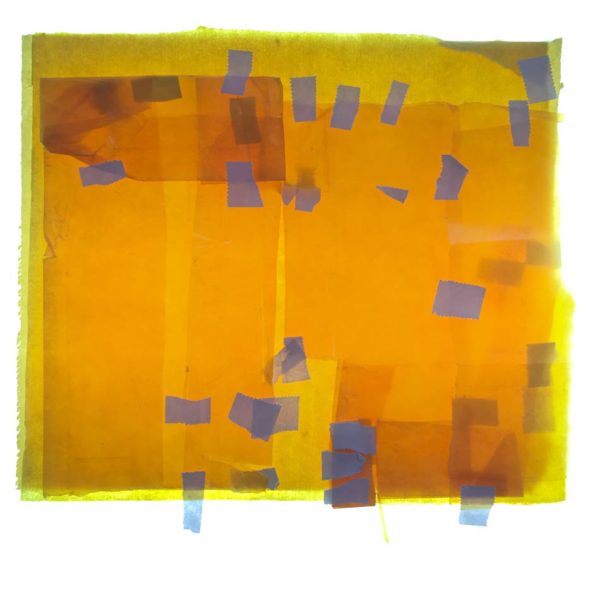
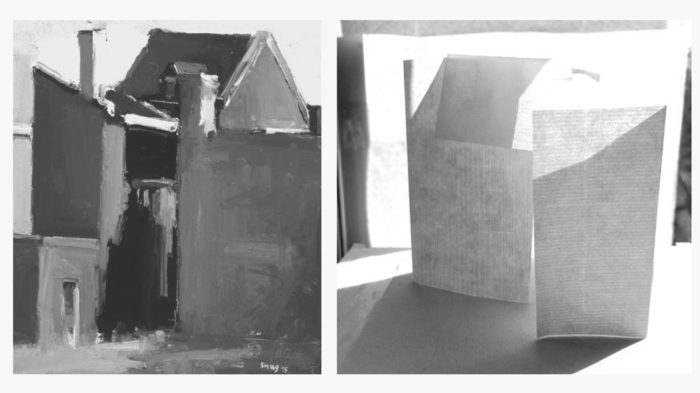
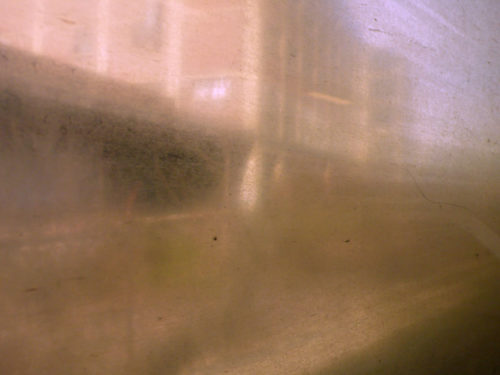
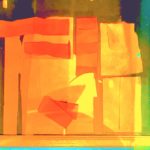
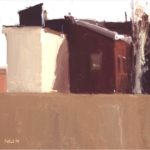
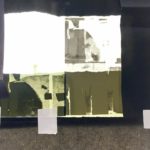

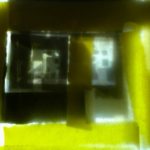
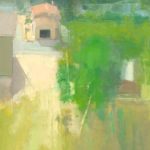


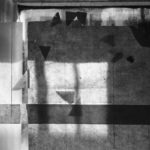
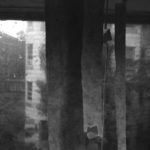
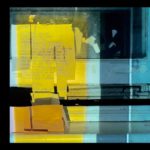
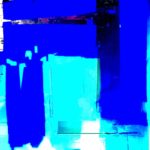
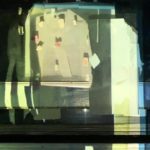
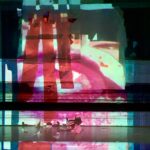
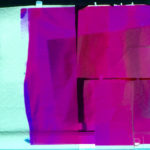
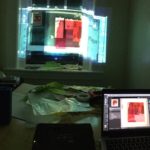
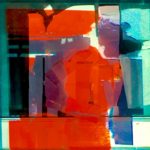
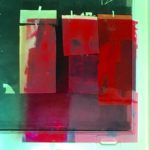
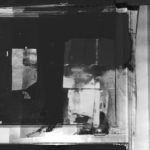
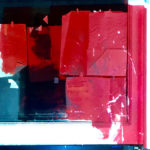
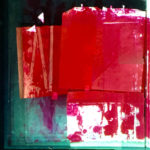
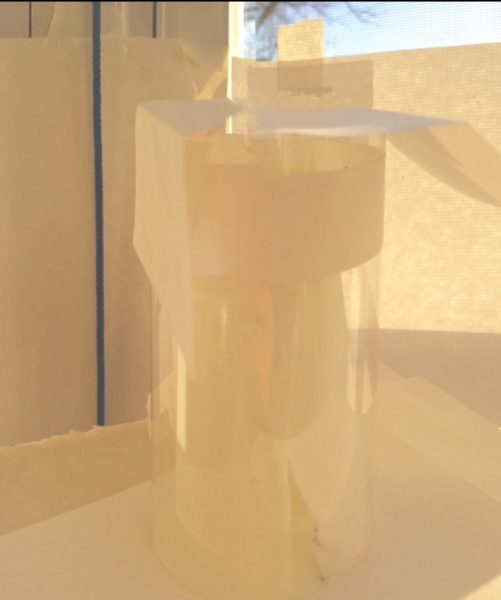
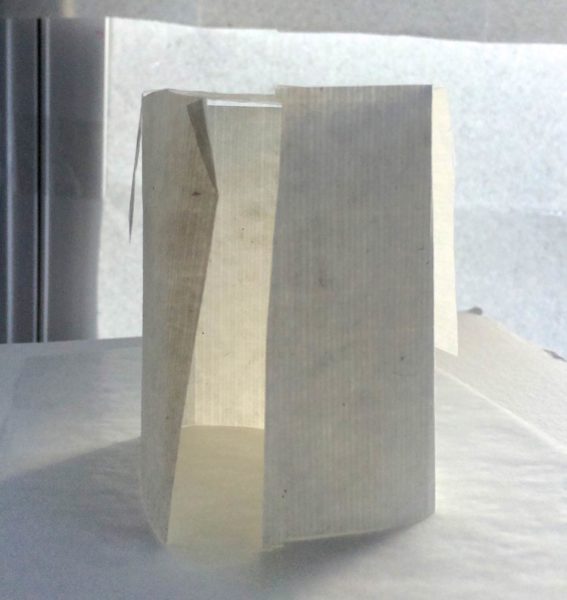
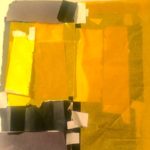
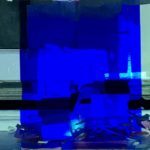
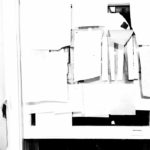
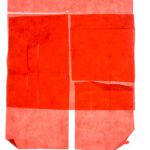
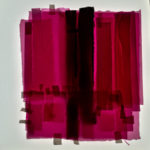
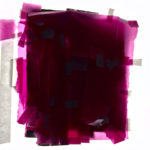
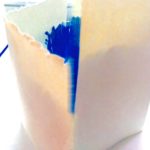
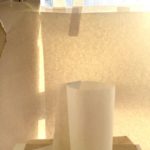
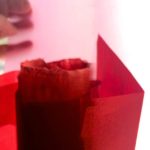
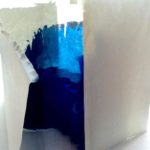
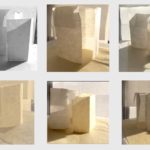
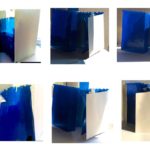
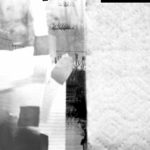
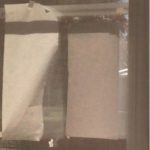
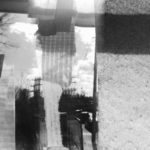
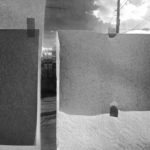
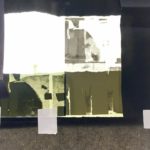
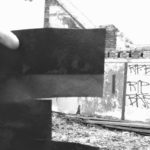
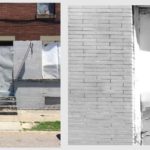
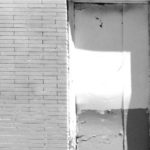
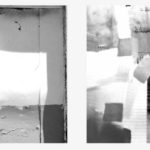
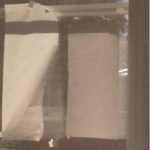
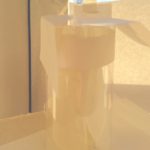
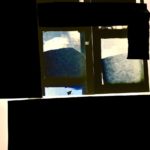
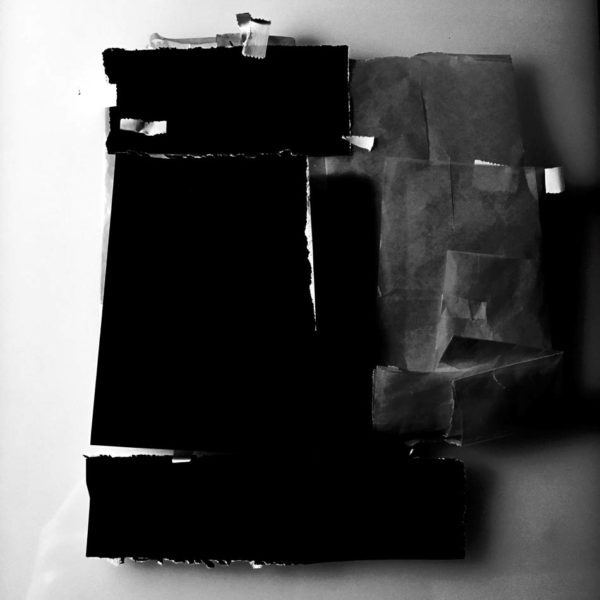
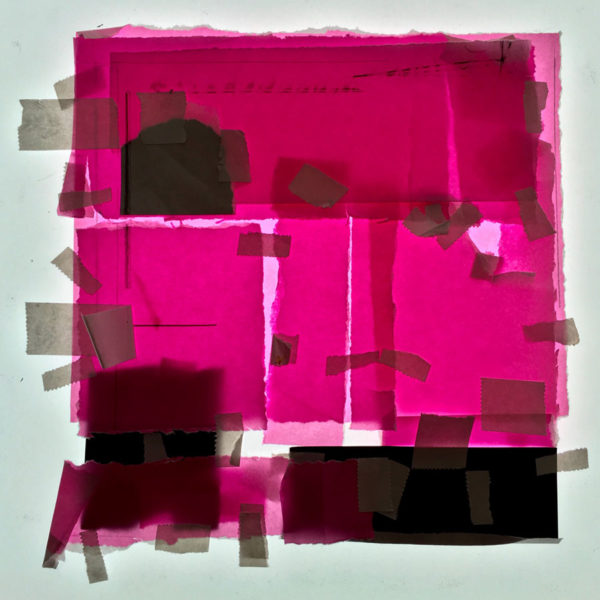
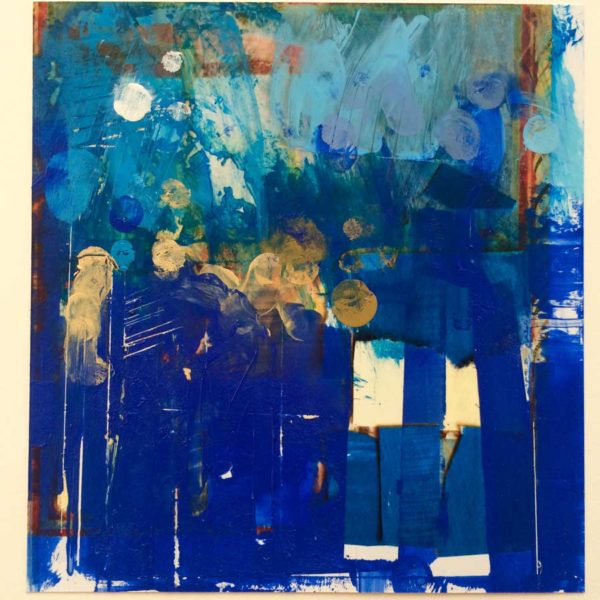
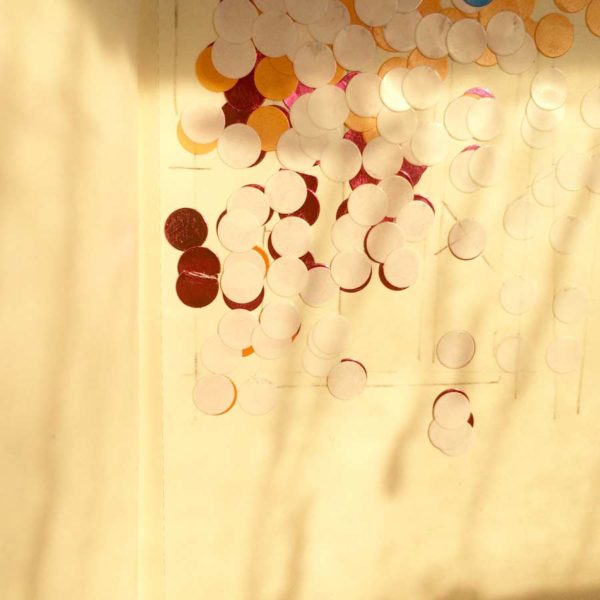
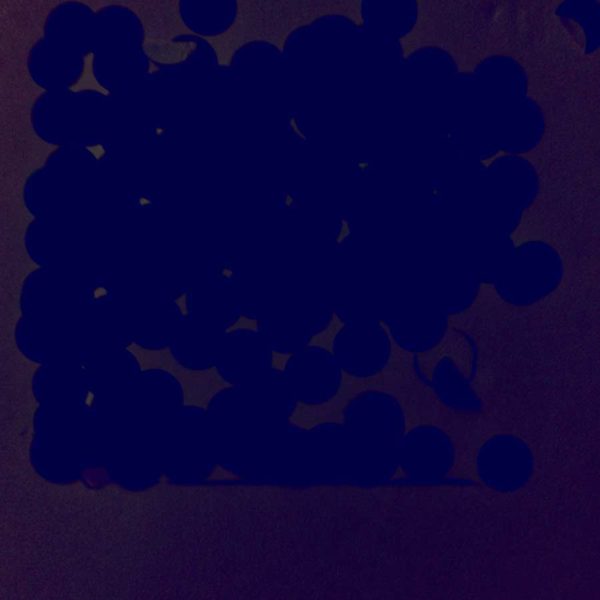


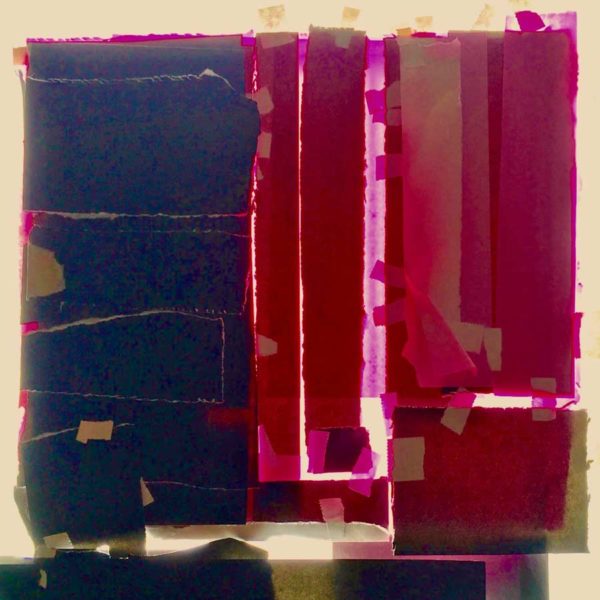
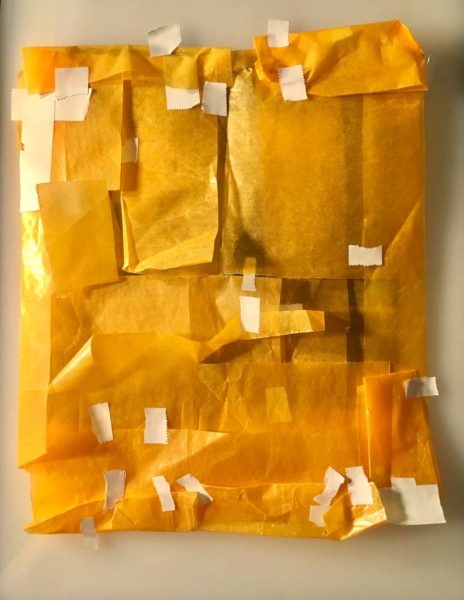
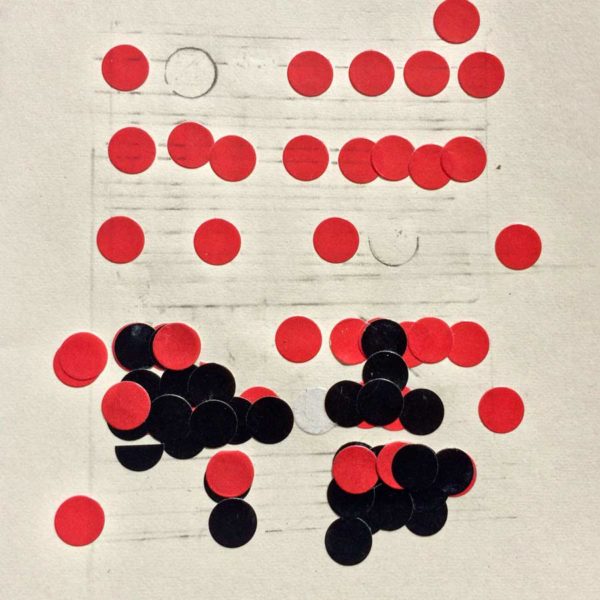

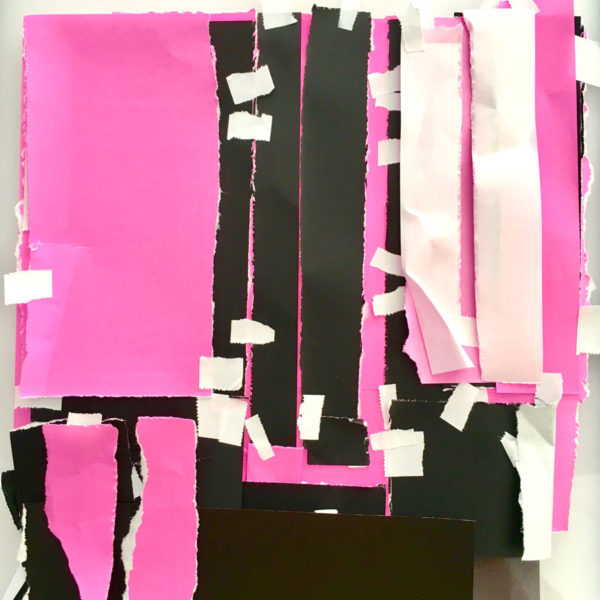
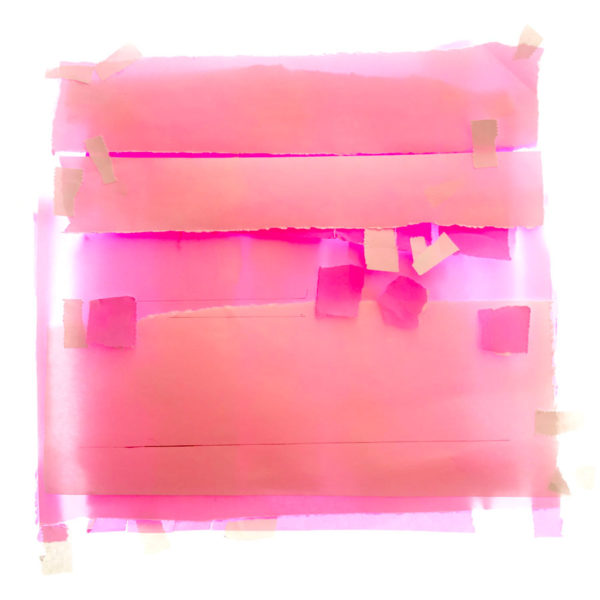
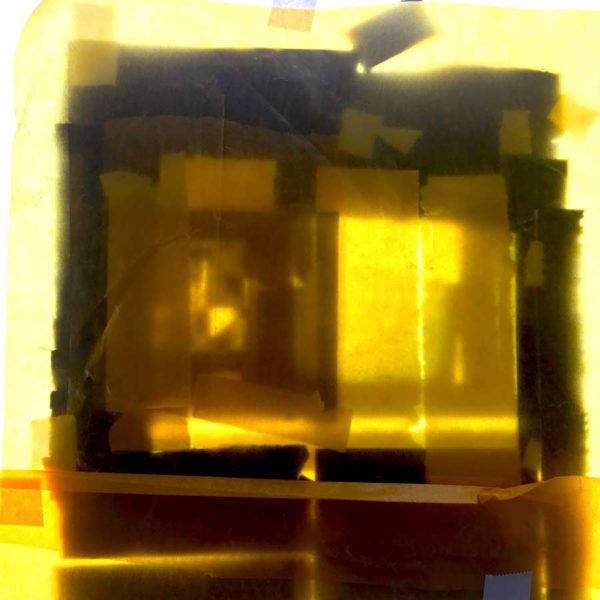
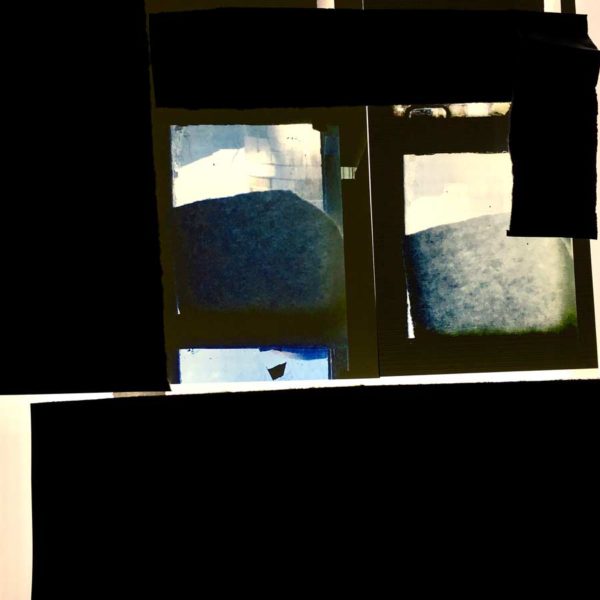
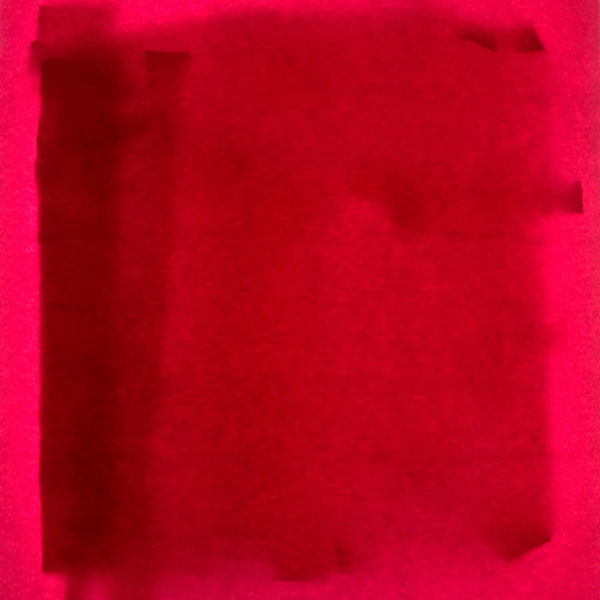




It has always been pointless to paint. That is its beauty,
Iphones are are higher res than many digital cameras, 13 plus megapixels is quite hi-res.
Architectures ( noun) used in the plural means different styles of architecture, not models.
ar·chi·tec·ture
ˈärkəˌtek(t)SHər/Submit
noun
the art or practice of designing and constructing buildings.
synonyms: building design, building style, planning, building, construction; formalarchitectonics
“modern architecture”
the style in which a building is designed or constructed, especially with regard to a specific period, place, or culture.
plural noun: architectures
“Victorian architecture”
I’ve been intrigued by the way Stuart thinks and feels and approaches his work. He makes us think differently about our own work. I can’t wait for the next two installments.
Thank you Larry for publishing this interview, and thank you Staurt Shills for being exactly who you are,
.Your words which are coming after the work and changes you are experiencing is trail blazing, and it would take me almost as many words to say how deeply I relate to all you have said, and I would be just repeating you. The gift of your words clarifies your process and reasons the process happened in the first place. They sit with me like echos, however unresolved, personally. But more important, is the work which I saw a little while ago on your website, with no words or orientation to media. I was deeply moved and just joyous at their visual impact. It was the same feeling as seeing your work from Ireland, many years ago. And this is only on the computer, so a lesser impact than reality. What I see is the intensity, as the connection to the past work. The sensitivity, the nuanaces, the poetry, the intuition. It is all your expression of a unique evolving personality. To give yourself permission to be so, to define your outpouring as an artist in the most personal interior considerations is an open door to those of us afficted with this passion to create the visual response. The work should be seen, used, imbedded in any forms of visual extensions whether on a wall, an image in forground or background in films, or recreated in paint on 8′ walls, there are endless possibilities. The work is passionate, exciting, kind, strong, with no covering or inattention to conflict. It becomes those things in the beauty of quality abstraction and remains fully ‘real’.
Thank you, Larry and Stuart. Very thoughtful and joyful work as well as some thought-provoking statements, Stuart. I agree – the sheer ‘noise and volume’ of images (and ideas) on the internet has cluttered our minds. It indeed takes much solitude and self-reflection without distraction(s) to go deep into one’s work and develop beyond mediocrity (not that I have gone beyond mediocrity in the least!). Thank you.
I love this…the part about not making his art for a gallery per se…brings up the question: is it art if it isn’t shown in a gallery or less of a piece of art…is the artist not an artist because he or she isn’t successful in a financial way…if he or she does not show his or her art in a gallery? I like the fact that the collages are temporary. I have read that Hans Jean Arp made collages by chance and when they began to fall apart he tried to fix them…finally he let them decay and fall apart. The photos are fascinating and if one wanted a “product” they could very well fit the bill…Much of Andy Goldsworthy’s art is temporary, and it is my understanding that his physical output is mostly photos of his work before they cease to exist.
I discovered your blog by accident a few years ago and have enjoyed reading several interviews, including this one. This is my first time commenting.
I think it’s great when an artist tries new things, but one must be wary of mistaking mere novelty for originality. In this day and age cleverness is often mistaken for the profound. I’m not judging Shils’ work; let future generations do that, as they will with everything. It’s just something to consider. Truth be told, I’ve always like Shils’ paintings, all the way back to his days at the Academy. I was there around the same time and am blessed or cursed (depending on your point of view) with a good memory. I did find one thing he said a little confusing and maybe a bit disingenuous. He said he is tired of our obsession with hi-tech, yet uses an iPhone and iPad. Wouldn’t these come under the heading of hi-tech?
Painters like Freud, Morandi, Balthus and Porter inform us that painting can still be original and relevant without any shrill bells and whistles. Well, that’s my two cents and keep up the good work showcasing these good artists.
Mr. Celano iterated what I probably meant in a less flippant way. Mr. Shils clients want a repeat of what was obviously a very succesful genre- sort of very pleasant landscape abstractions that went with their decor- lovely, but not threatening. Somehow he feels his (and our pursuit) is meaningless in the face of the planets seeming disintegration and yet his answer is making images that are even more unrelatable except to the cognoscenti and art critics, the contemporary artists ultimate god especially someone like Jerry Salz whom he follows. i was wallowing with him in this same miasma of helplessness and agreed with some of his points until I came across this Venezuelan artist who brought me to my knees. https://www.instagram.com/mikele_art/ This man with a young son persists in painting despite the horrors of the current situation in Venezuela, including mass starvation and government murders. I am trying every way to see if I can help him (,Venezuela is refusing foreign aid) including scraping up enough money to buy a painting. He has shown me the real power of art. I have not stopped crying.
Consider a series of investigations & interviews on art-making that is architecturally inflected.
(There are many subtle pathways this could take, with many an artist having insights unexpected.
I may be useful in some way.